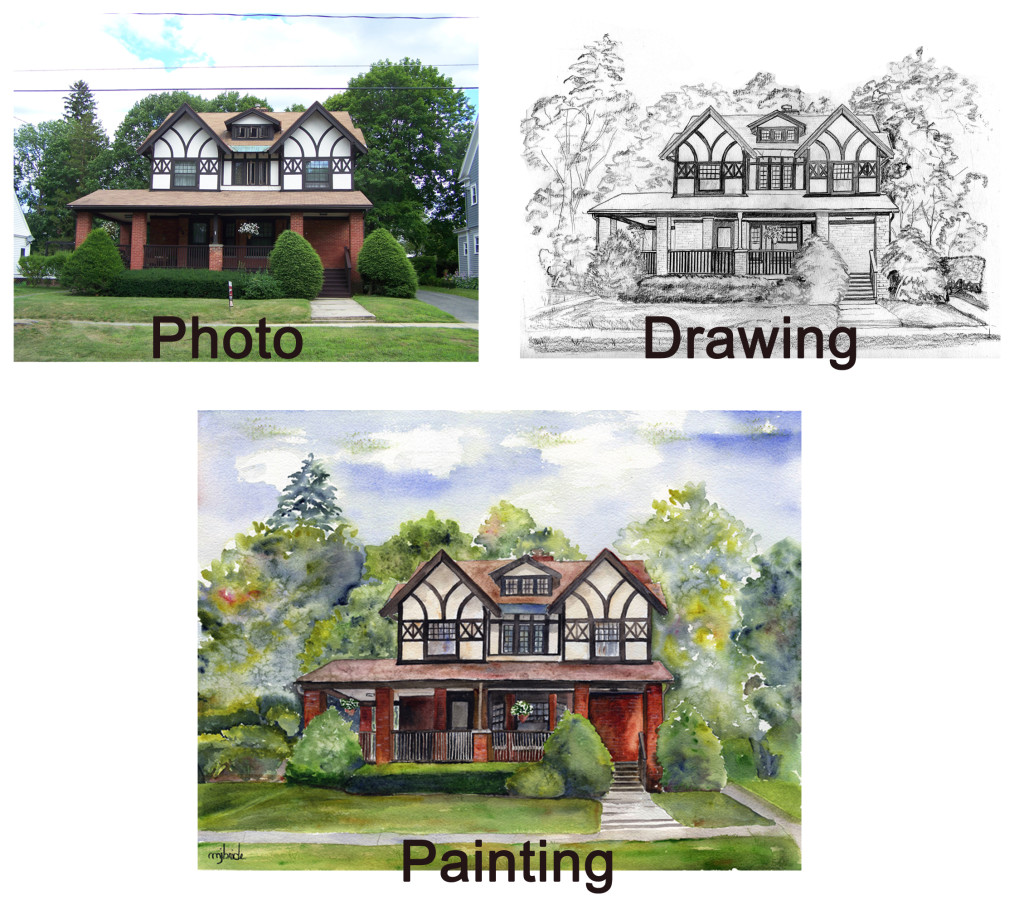
My procedure for Painting a House Portrait
- Photo Shoot – if property is local, I will walk the property with the home owner and take tons of reference photos. I will take photos close up and distant and even some of the abutting property. I like to encircle the home to get the “feel” of the home and the surroundings, even if I am only painting the front of the home. Sometimes I return to take additional photos if the exposure is not right during the initial photo shoot. I like to see how the shadows fall; they give life to a painting.
- Things we discuss…
- Possible perspectives for the painting. And “orientation”…such as a wide “landscape” view, or traditional shape. Often the homeowners know exactly what they want, others are open for ideas;
- What to leave in, what to leave out, what to add (dogs, trucks, etc.) as well as trees to move, shrubbery to “grow” or trim;
- Season of the painting, and if the home owner would like gardens in bloom and they are not during the photo shoot, it’s helpful to me to have some photos that were taken earlier. Same if the home owner wants a snowy scene and it’s not winter… client photos help, but I can also use my imagination and do some research as well if that is not possible;
- Time of day – early evening paintings in winter are stunning, also, during any season the lighting is always more attractive in early morning or afternoon…just not when the sun is high.
- Drawing – I then study all of the photos and do a drawing based on our discussion and the reference photos. It is often a rough sketch, sometimes more defined. The purpose is to make sure we are on the “same page” … also this is the time when you can change your mind about things…decide to move or remove some trees, make the barn look a little closer etc. Once all decisions have been made, including size of your painting, and you give me the “go-ahead”, I will proceed with the painting.
- Painting – I scan the final version of the drawing. I then am able to resize it to the painting size and print it on large light-weight paper. I use this as a template for the painting. Because watercolor paper is delicate, I do my original drawing on drawing paper. I then transfer the image by hand using graphite paper, and I try to transfer only the parts of the drawing that are critical to have correct (placement of windows, doors, driveway etc.). Other things like the trees and shrubbery, I try to do freehand as much as possible.
- Techniques I often use: masking fluid to keep the whites white and pristine, salt to create funky textural effects. Products I use: I typically paint on 300 lb Arches watercolor paper, slightly off-white. Because of the weight of the paper, it does not require stretching. I use a variety of professional level tube (mostly) watercolor paints.